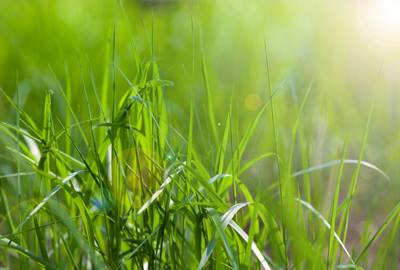
When you think about it, the concept of a perfectly neat, square, even, manicured lawn is really quite unnatural. For one thing, maintaining such a lawn is impossible without artificial intervention of some sort.
Usually that intervention comes in the form of frequent clipping, application of weed killers and insecticides, watering, mulching, and fertilizing. The manicured l awn is largely artificial, in other words.
Reducing the size of your perfectly-cut lawn will decrease your use of gas-powered lawn equipment. Lawn mowers, weed whackers, leaf blowers, and other machines use fossil fuels and make noise. A smaller lawn is easier to maintain with a hand-powered reel mower. And even if you use gas-powered equipment, a smaller lawn means a faster job and fewer emissions.
Reducing the size of your manicured lawn also means reducing your use of insecticides and pesticides. Honeybee populations are dwindling, and it has been conjectured that pesticide use is among the reasons. Bees are insects, too, after all.
To achieve that manicured look, you need to apply some kind of weed killer. Grass and only grass is what goes into the perfect lawn, but it is so unnatural that it can't maintain that lack of diversity without intervention. If you must have only grass, then a small area makes much more sense. It's easier to maintain and will require fewer chemicals.
The shallow roots of grass dry out quickly and must be watered. You will use much less water if you do not have to maintain a large lawn.
What do you do, then, with the space left after reducing the size of your trimmed and neat lawn? Here are some ideas.
* Let nature take it! All sorts of diverse plants will spring up on the untended lawn, some of them quite useful. Violets and clover are both edible, and bees love clover blossoms. Pigweed (Amaranthus retroflexus) and Lamb's Quarters (Chenopodium album) are common weeds that make very nutritious pot herbs.
* Plant some rambler roses or other unkempt, free-form shrubs and plants. This will attract bees and hummingbirds, and you will have a beautiful yard with little maintenance.
* Put in a water feature such as a pond or fountain.
* Set up a birdbath and feeding station.
* Plant a spreading ground cover such as periwinkle or pachysandra. Try to find native species.
* Plant a tree.
* Sprinkle wildflower seeds during the appropriate season. Go for native species whenever possible.
* Set up bee hives.
* Plant a vegetable or herb garden, or low-maintenance berry-bearing shrubs like blackberries or raspberries.
If you reduce the size of your carefully clipped and square lawn, you will be increasing the plant diversity on your property. And diversity is key to healthy ecosystems. So when you let some of the manicuring go, you are supporting the environment.

